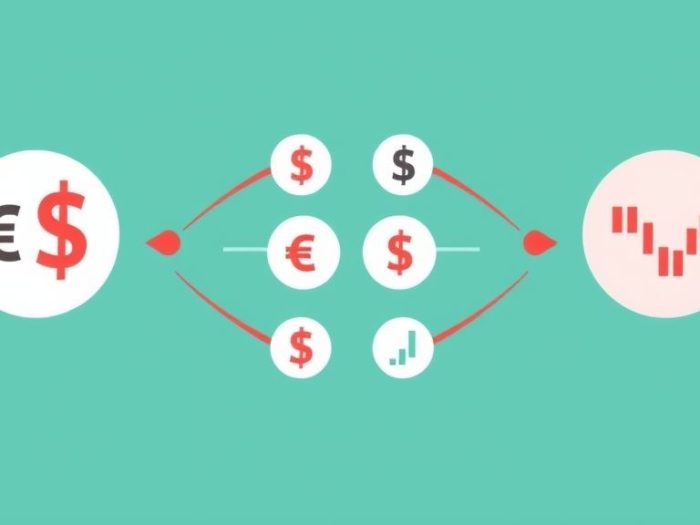Forex correlation trading is a strategy that capitalizes on the relationships between
currency pairs. Understanding how different pairs move in relation to each other can
provide valuable insights and trading opportunities. This article explores how to use
forex correlation to find the best trading opportunities and improve your trading
strategy.
Understanding Forex Correlation
Forex correlation is the statistical measure of how two currency pairs move in relation
to each other. The correlation coefficient ranges from -1 to +1:
- +1: Perfect positive correlation (pairs move in the same direction).
- 0: No correlation (pairs move randomly).
- -1: Perfect negative correlation (pairs move in opposite directions).
Why Use Forex Correlation in Trading?
Forex correlation can help traders:
- Confirm Trade Signals: Strengthen the validity of a trade by observing correlated pairs.
- Avoid Conflicting Trades: Prevent taking opposing positions on highly correlated pairs.
- Diversify Risk: Find pairs with negative or low correlation to reduce portfolio risk.
- Identify Opportunities: Spot potential trading setups based on correlated pair movements.
Finding the Best Pair Opportunities
Here’s how to use forex correlation to find trading opportunities:
1. Identify Correlated Pairs
Use forex correlation tools or charts to identify currency pairs with strong positive or
negative correlation.
-
Common Correlations:
- EUR/USD and GBP/USD (often positively correlated)
- USD/CHF and USD/CAD (often positively correlated)
- EUR/USD and USD/CHF (often negatively correlated)
2. Analyze the Primary Pair
Choose one of the correlated pairs as your primary pair and analyze it using your
preferred trading strategy (e.g., technical analysis, fundamental analysis).
3. Confirm with the Correlated Pair
Use the correlated pair to confirm the signals from the primary pair.
-
Positive Correlation: If the primary pair shows a bullish signal,
look for a similar bullish signal in the positively correlated pair. -
Negative Correlation: If the primary pair shows a bullish signal,
look for a bearish signal in the negatively correlated pair.
4. Execute the Trade
If the correlated pair confirms the signal, enter the trade on the primary pair.
5. Manage Risk
Always use proper risk management techniques, including stop-loss orders and appropriate
position sizing.
Examples
Example 1: EUR/USD and GBP/USD (Positive Correlation)
- You identify a strong bullish signal on EUR/USD.
- You check GBP/USD and see a similar bullish signal.
- This confirms the strength of the bullish move, and you enter a long position on EUR/USD.
Example 2: EUR/USD and USD/CHF (Negative Correlation)
- You identify a bearish signal on EUR/USD.
- You check USD/CHF and see a bullish signal (confirming the bearish move on EUR/USD).
- You enter a short position on EUR/USD.
Important Considerations
- Correlation Strength: Correlation is not always perfect and can vary in strength.
- Timeframes: Correlation can be more reliable on higher timeframes.
- Market Conditions: Correlation can change during periods of high volatility or fundamental shifts.
- Economic Factors: Be aware of economic events that can affect currency correlations.
- Currency Pair Specifics: Some pairs have stronger correlations than others.
Conclusion
Forex correlation trading can be a valuable tool for enhancing your trading strategy.
By understanding how currency pairs relate to each other and using correlation to
confirm signals, you can increase your confidence and potentially improve your
trading outcomes. However, always remember that correlation is not a guarantee, and
proper risk management is essential.
Related Keywords
Forex correlation, currency correlation, forex correlation trading, forex trading
strategy, forex trading for beginners, forex trading tips, forex trading analysis,
forex currency pairs, forex trading signals, forex trading system.
Frequently Asked Questions (FAQ)
1. What is forex correlation?
Forex correlation is the statistical measure of how two currency pairs move in
relation to each other.
2. What is the correlation coefficient?
The correlation coefficient ranges from -1 to +1, where +1 is perfect
positive correlation, 0 is no correlation, and -1 is perfect negative
correlation.
3. Why is forex correlation used in trading?
Forex correlation is used to confirm trade signals, avoid conflicting trades,
diversify risk, and identify trading opportunities.
4. What is perfect positive correlation?
Perfect positive correlation (+1) means that two currency pairs move in the
same direction.
5. What is perfect negative correlation?
Perfect negative correlation (-1) means that two currency pairs move in
opposite directions.
6. How can I use forex correlation to confirm a trade?
If the primary pair shows a bullish signal, look for a similar bullish
signal in a positively correlated pair or a bearish signal in a negatively
correlated pair.
7. What are some commonly correlated forex pairs?
Commonly correlated pairs include EUR/USD and GBP/USD (positive), USD/CHF and
USD/CAD (positive), and EUR/USD and USD/CHF (negative).
8. Does correlation guarantee future price movements?
No, correlation is not a guarantee. It’s a statistical relationship that can
change.
9. How does timeframe affect forex correlation?
Correlation can be more reliable on higher timeframes (e.g., daily or weekly
charts).
10. Can economic events affect forex correlation?
Yes, major economic events can cause temporary or long-term shifts in currency
correlations.



